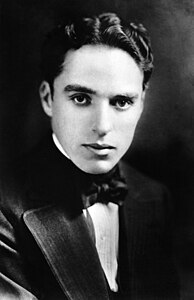
Back سينما صامتة Arabic নিৰ্বাক চলচ্চিত্ৰ Assamese Cine mudu AST Səssiz film Azerbaijani Нямое кіно Byelorussian Нямо кино Bulgarian নির্বাক চলচ্চিত্র Bengali/Bangla Cinema mut Catalan فیلمی بێدەنگ CKB Němý film Czech


A silent film is a film without synchronized recorded sound (or more generally, no audible dialogue). Though silent films convey narrative and emotion visually, various plot elements (such as a setting or era) or key lines of dialogue may, when necessary, be conveyed by the use of inter-title cards.
The term "silent film" is something of a misnomer, as these films were almost always accompanied by live sounds. During the silent era that existed from the mid-1890s to the late 1920s, a pianist, theater organist—or even, in larger cities, an orchestra—would play music to accompany the films. Pianists and organists would play either from sheet music, or improvisation. Sometimes a person would even narrate the inter-title cards for the audience. Though at the time the technology to synchronize sound with the film did not exist, music was seen as an essential part of the viewing experience. "Silent film" is typically used as a historical term to describe an era of cinema prior to the invention of synchronized sound, but it also applies to such sound-era films as City Lights, Modern Times and Silent Movie which are accompanied by a music-only soundtrack in place of dialogue.
The term silent film is a retronym—a term created to retroactively distinguish something from later developments. Early sound films, starting with The Jazz Singer in 1927, were variously referred to as the "talkies", "sound films", or "talking pictures". The idea of combining motion pictures with recorded sound is older than film (it was suggested almost immediately after Edison introduced the phonograph in 1877), and some early experiments had the projectionist manually adjusting the frame rate to fit the sound,[1] but because of the technical challenges involved, the introduction of synchronized dialogue became practical only in the late 1920s with the perfection of the Audion amplifier tube and the advent of the Vitaphone system.[2] Within a decade, the widespread production of silent films for popular entertainment had ceased, and the industry had moved fully into the sound era, in which movies were accompanied by synchronized sound recordings of spoken dialogue, music and sound effects.
Most early motion pictures are considered lost owing to their physical decay, for the nitrate filmstock used in that era was extremely unstable and flammable. Additionally, many films were deliberately destroyed, because they had negligible remaining immediate financial value in that era. It has often been claimed that around 75 percent of silent films produced in the US have been lost, though these estimates are inaccurate due to a lack of numerical data.[3]
- ^ Torres-Pruñonosa, Jose; Plaza-Navas, Miquel-Angel; Brown, Silas (2022). "Jehovah's Witnesses' adoption of digitally-mediated services during Covid-19 pandemic". Cogent Social Sciences. 8 (1). doi:10.1080/23311886.2022.2071034. hdl:10261/268521. S2CID 248581687.
synchronised sound in the silent-movie era (accomplished by playing a gramophone while manually adjusting the projector's frame rate for lip synchronisation)
- ^ "Silent Films". JSTOR. Archived from the original on May 26, 2019. Retrieved October 29, 2019.
- ^ Slide 2000, p. 5.
© MMXXIII Rich X Search. We shall prevail. All rights reserved. Rich X Search